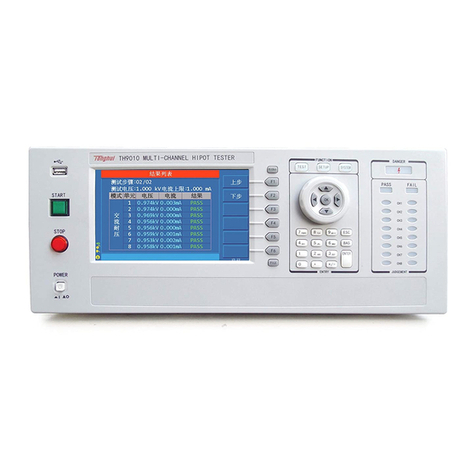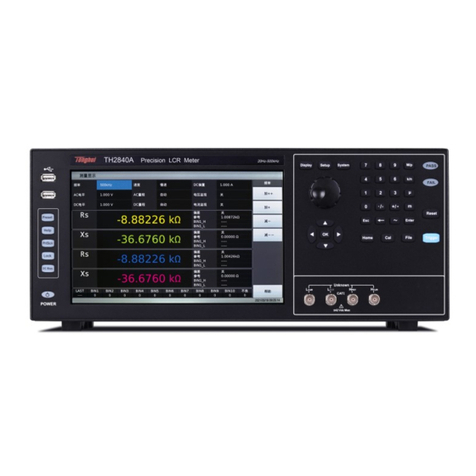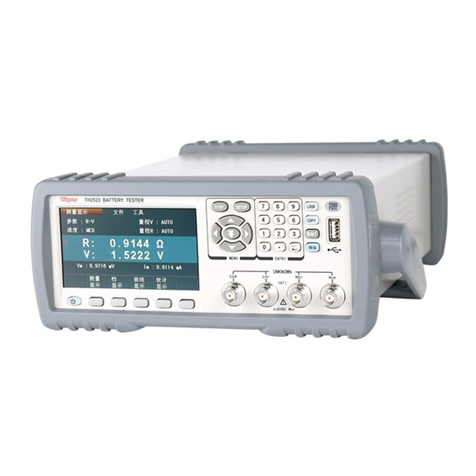
TH8400 Series Operation Manual
Contents
Chapter 1 Overview......................................................................................................................3
1.1 Introduction..................................................................................................................3
1.2 Condition of Use..........................................................................................................3
1.3 Weight and Dimension.................................................................................................4
1.4 Safety Requirement......................................................................................................4
1.5 Electromagnetic Compatibility ....................................................................................5
Chapter 2 Panels...........................................................................................................................2
2.1 Introduction to front panel ...........................................................................................2
2.2 Introduction to rear panel.............................................................................................3
2.3 Introduction to display zone.........................................................................................3
2.4 Summary of the Displayed Page..................................................................................4
2.4.1 DISP (Function Display Page) .....................................................................4
2.4.2 SETUP (System Settings Page)....................................................................5
Chapter 3 Function Setting and Use.............................................................................................6
3.1 Static Mode (Static)......................................................................................................6
3.1.1 Constant Current(CC) ..................................................................................7
3.1.2 Constant Voltage(CV)..................................................................................7
3.1.3 Constant Resistance(CR)..............................................................................8
3.1.4 Constant Power(CP).....................................................................................8
3.2 Dynamic Mode (Dynamic) ..........................................................................................8
3.3 Sequential Operation (List)..........................................................................................9
3.4 CR-LED .....................................................................................................................10
3.5 Battery Test (Battery).................................................................................................11
3.6 Time Test(Timing)......................................................................................................12
3.7 Overcurrent Protection Test(OCPT)...........................................................................13
3.8 Over Voltage Protection Test(OVPT).........................................................................14
3.9 OPPT..........................................................................................................................15
3.10 Load Effect.................................................................................................................15
3.11 Sweep.........................................................................................................................17
3.12 Automatic Test (AUTO).............................................................................................18
Chapter 4 System Setup..............................................................................................................20
4.1 SYSTEM Setup (System) ..........................................................................................20
4.1.1 Language....................................................................................................20
4.1.2 Key Sound..................................................................................................20
4.1.3 Remote Compensation...............................................................................20
4.1.4 Start-up Parameters ....................................................................................21
4.1.5 Display Mode.............................................................................................21
4.1.6 Source under Test.......................................................................................22
4.1.7 External Analog..........................................................................................22
4.2 Load Unload (Von/Voff).............................................................................................22
4.3 Security Setting (Protect)...........................................................................................23
4.4 File Store....................................................................................................................24



































